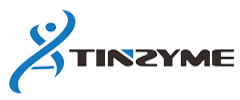PCR mix also named PCR Master Mix. And the PCR stands for Polymerase Chain Reaction. It is a laboratory technique used to amplify a specific DNA from small scale to large scale. PCR is widely used in various fields of research, diagnostics, and forensic analysis.
The process requires a DNA template, primers/oligos (short DNA sequences that bind to the target DNA), hot stable DNA polymerase, and nucleotides ((dATP, dCTP, dGTP, and dTTP). PCR has revolutionized molecular biology and has numerous applications, including genetic testing, disease diagnosis, DNA sequencing, and genetic engineering.
The process of PCR


PCR reaction set up
1) the reagents
Template DNA
dNTP (10mM each dNTP mix,25mM dNTP mix for option)
Taq DNA polymerase (5U/μl)
Forward primer
Reverse primers
10× Buffer,
15mmol Mg2+,
ddH2O
2) equipment
PCR thermal cycler
Pipette and tips
DNase free PCR tube
3) Process
Add the reagent with a Pipette according the flowing table:

Set up the process according the flowing table

4) After Run the cycles, run an agarose gel electrophoresis to view the result.

As showed above, to run a PCR need to add at least 7 reagents need to be added in a tube. It takes lot of time and easy to generate errors or omissions cause PCR reaction failure. So, some companies make the necessary reagent to a pre mixture. It is called PCR mix or PCR master mix. The component of the PCR mix will include water, Taq DNA Polymerase, dNTPs, glycerol, MgCL2, the stabilizer, the enhancer and the loading dye.
After pre mixed, the PCR mix greatly improves the reaction efficiency and saves experimental time for the researcher.

According to different application requirements, PCR can be divided into different types
Standard PCR (Conventional PCR): The most common type of PCR used for DNA amplification, sequencing, and genotyping.
Real-time Quantitative PCR (qPCR): It quantitatively measures the starting amount of template DNA by monitoring fluorescence signals during the PCR reaction. It is commonly used for gene expression analysis, pathogen detection, etc.
Reverse Transcription PCR (RT-PCR): It first converts RNA into cDNA through reverse transcription and then amplifies the DNA. It is used for gene expression studies, virus detection, etc.
Digital PCR (dPCR): It divides the PCR reaction into multiple small reaction systems and quantifies the starting template DNA by counting the number of positive and negative reactions. It is used for quantifying low copy number targets.
According to different PCR requirements, PCR mix is also classified into different types.
The PCR mix, PCR master mix commonly used for the general PCR.
The SYBR qPCR Mix, use SYBR Green dye to detect and quantify the amplification of specific DNA sequences in real-time.
TaqMan Probe PCR Mix uses a TaqMan probe for detection and quantification of specific DNA sequences, this PCR mix mainly used for Diagnostic purpose.
RT-PCR Mix or RT-qPCR mix, this mix first converts RNA into cDNA through reverse transcription and then amplifies the DNA. It is used for gene expression studies, virus detection, etc.



